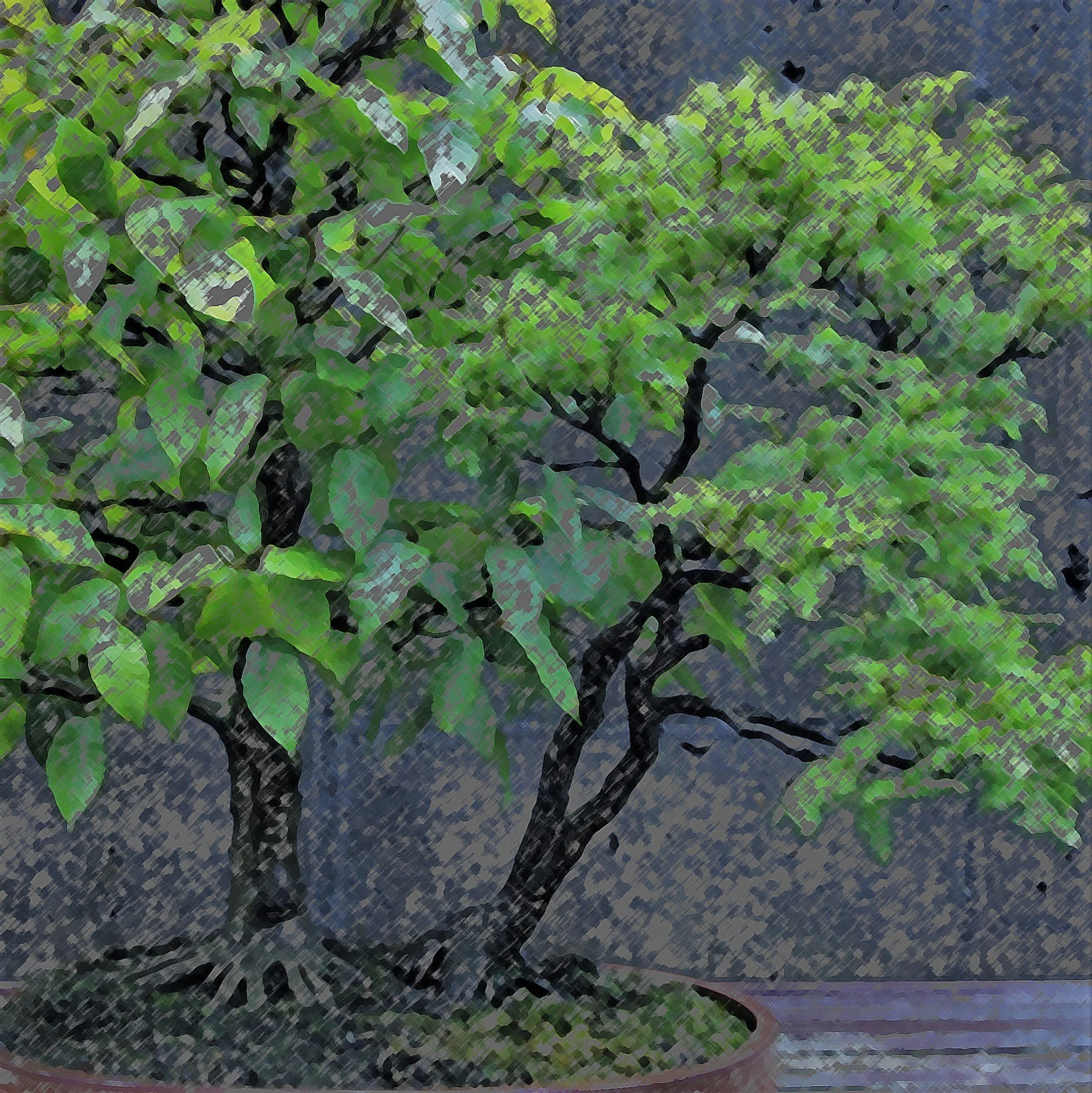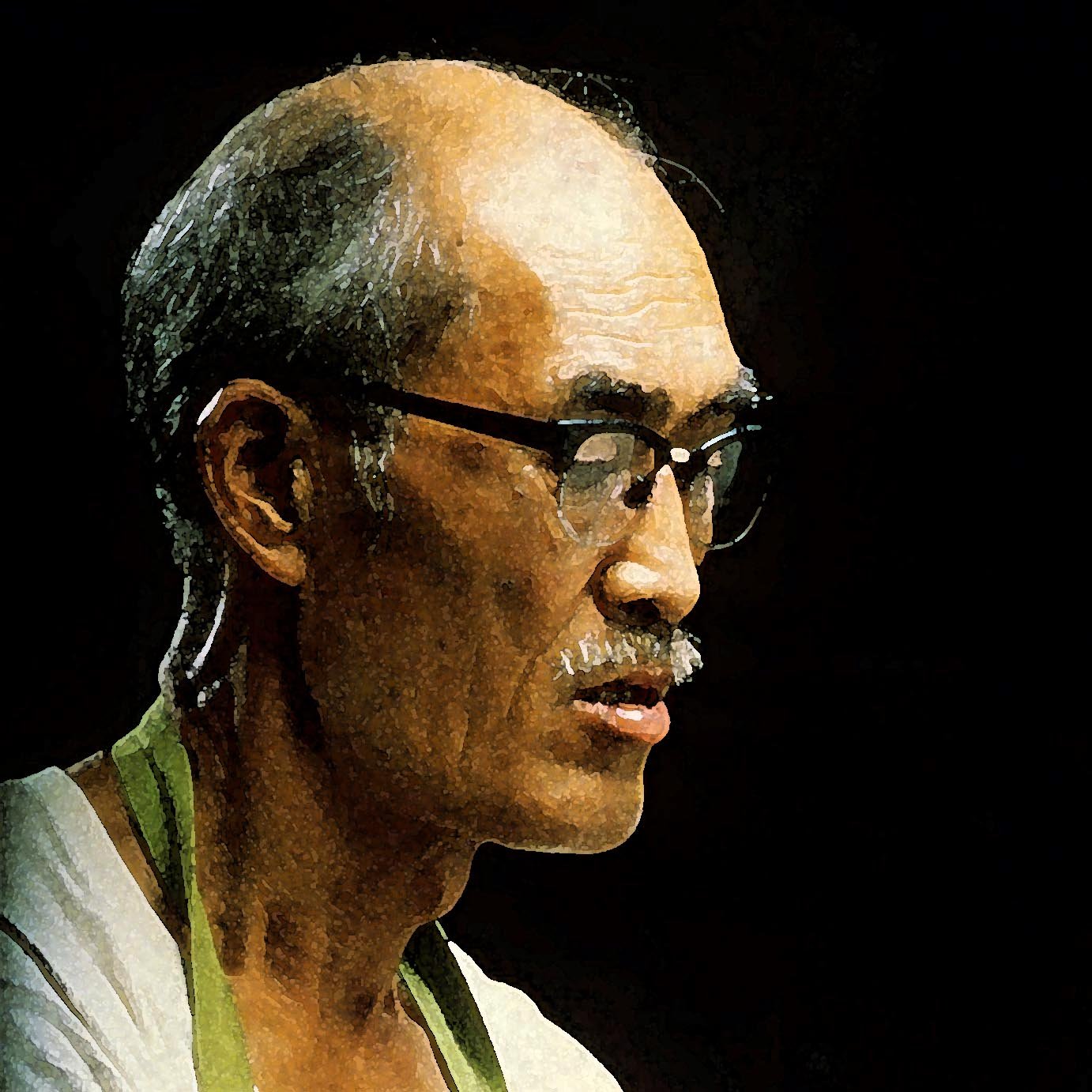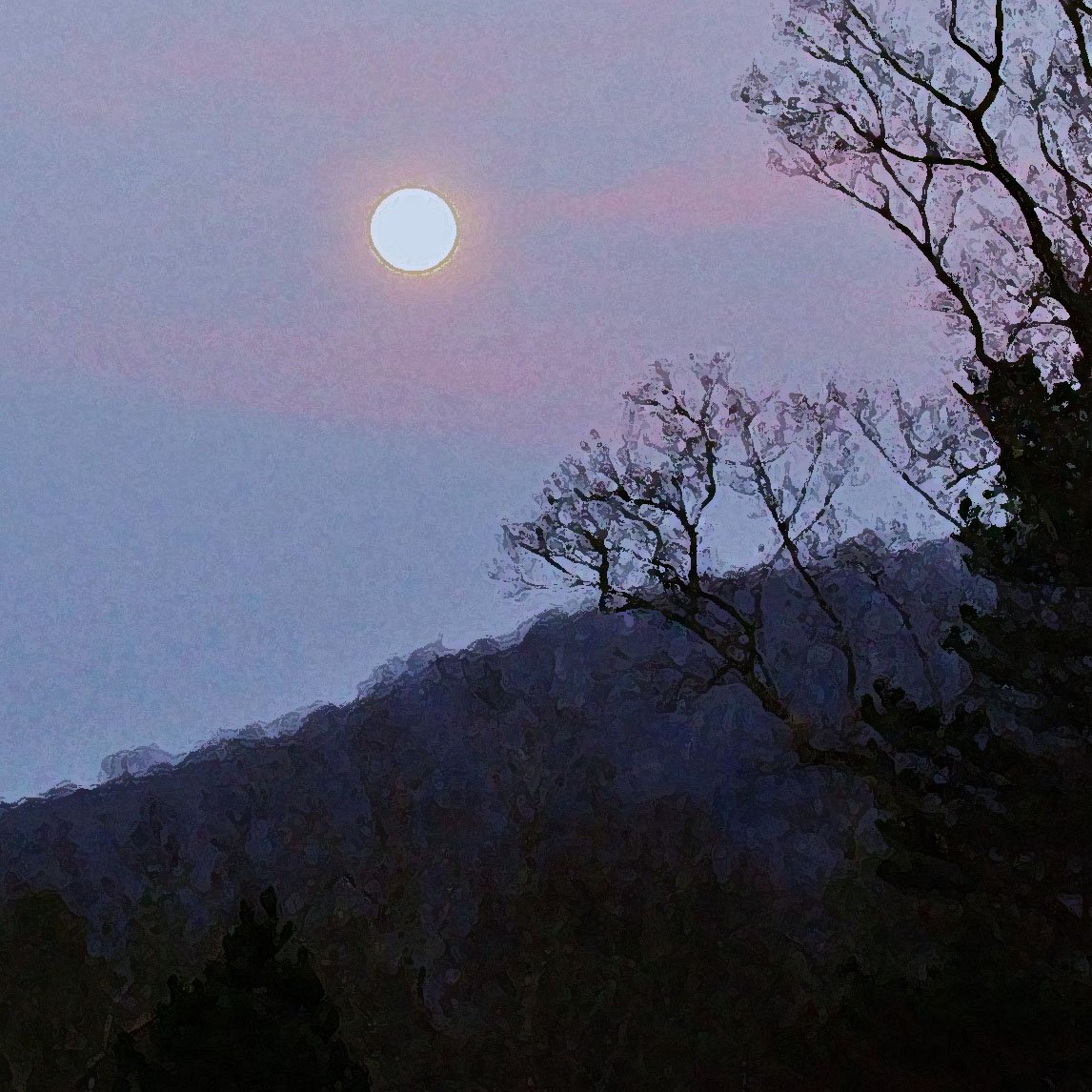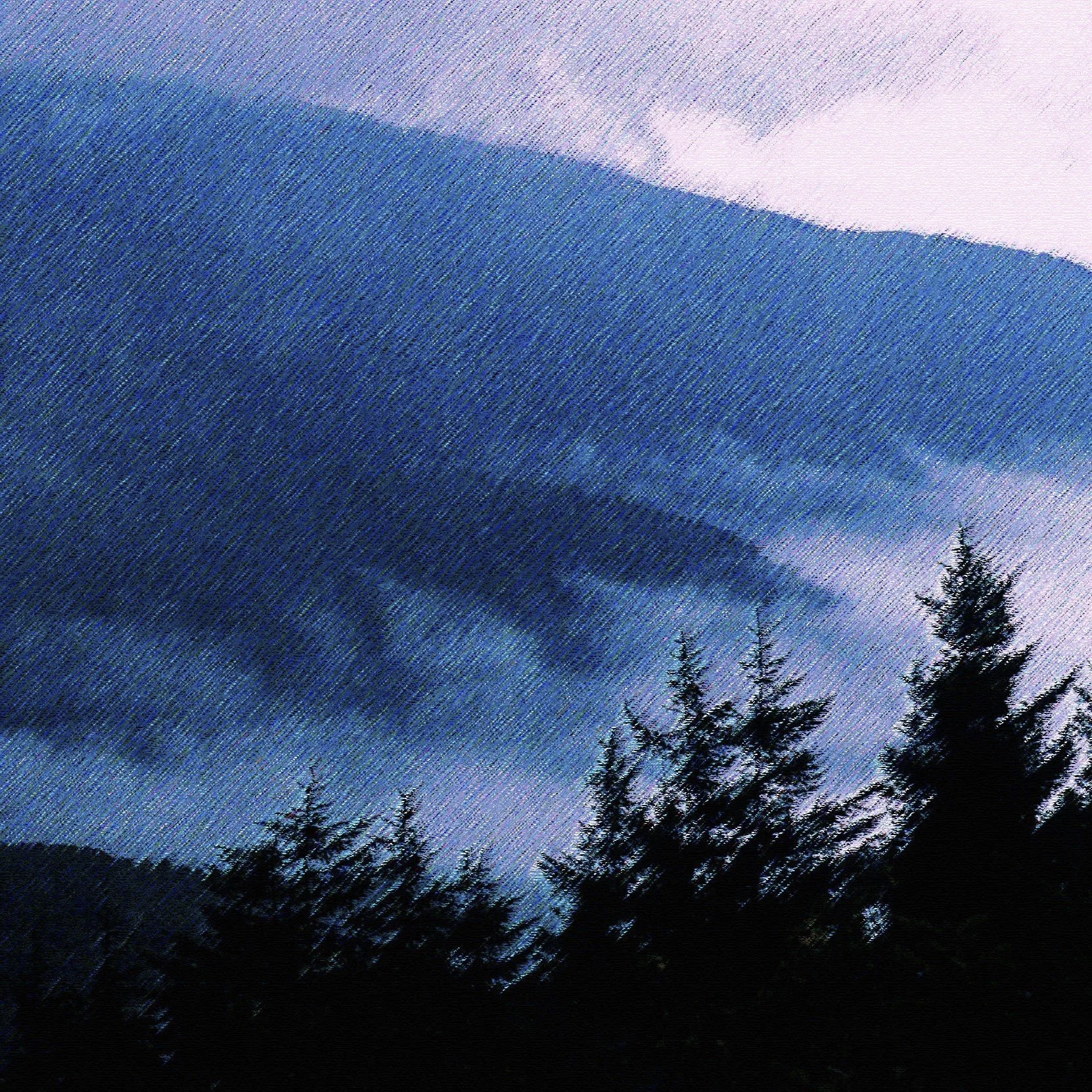Bonsai is a collaborative art form, not only in the sense that multiple people can and do influence any given piece, but also in the sense that the living plant material contributes its own individual nature, as well. Is there such a thing as interspecies art?
The idea of identifying what is most appealing about a tree and making that feature more prominent through presentation is elemental to good bonsai design. Other teachers have taught this, but I learned it that day from Mr. Yoshimura, on this juniper specimen.
Faith is required, along with a bit of imagination, to see past the moment and focus on an outcome that is perhaps years away. That visionary aspect of bonsai design was another of Mr. Yoshimura's strengths. I should add that my decision to take a chance and try for something different, to be creative and innovative in my thinking, was also a product of Mr. Yoshimura's influence. Those were traits he stressed to me when I studied with him. I was paying attention.
In the four years since the demonstration that brought them together, the beech and hemlock did well and both attained an agreeable degree of ramification in their branching. It is worth pointing out that even if a person is persnickety about larger sized leaves on deciduous bonsai trees, half the year there is no problem at all. American beech has distinctive leaf buds, too, so the winter look of this planting was particularly pleasing to me.
Even after removing the dead beech tree, I did not do much with the hemlock for a while. I spent the time taking care of other plants while keeping an eye on what remained of Mr. Yoshimura's tree and thinking about what to do next. I had always seen those trees as being subsidiary to some larger element: first the original primary trunk of the hemlock and later the American beech that replaced it. Now it was time to evaluate them on their own.
He didn't crack this like an obvious joke. He said it straight faced and then went about his business. This was one of several instances during the program where Mr. Yoshimura projected what I took to be an iconoclastic tendency. He was conservative in his appearance, precise and formal in manner, but seemed rebellious in his attitude. At the conclusion of the program I turned to Janet and said, "What a dangerous old man!"
In 1994, even as I was working toward the goal of a regional bonsai community with The North Carolina Arboretum at its center, I was trying to accelerate my personal bonsai learning curve. Word reached me early in the year that Yuji Yoshimura was going to be in Charlotte, doing a workshop program for the Bonsai Society of the Carolinas. Ever since meeting Mr. Yoshimura at the convention the year before I had been trying to figure out how to pursue the tantalizing offer of personalized instruction with him.
The time has come for me to talk about Yuji Yoshimura. His name has appeared repeatedly in this Journal, because his influence on me — and, through me, on the Arboretum's bonsai identity — has been profound. But I have not yet told the story of the experiences with him that set my bonsai thinking on such a fateful course.
As the new year began in 1959, thirty-seven-year-old Yuji Yoshimura began teaching bonsai classes at the Brooklyn Botanic Garden. He'd arrived in America laden with all the bonsai materials needed because they would not be otherwise available. This amounted to more than a ton of baggage, and the whole operation must have required prodigious planning and organization.
In writing about my experience with Mr. Yoshimura, I am looking back over a span of nearly thirty years— long enough ago that some significant changes have occurred in how we live everyday life. Perhaps greatest among them is the revolution wrought by advances in electronic communication.
In January of 1995 I traveled to Briarcliff Manor, New York, for a three-day study session with Mr. Yuji Yoshimura. Shortly after my return, I wrote an account of the experience and submitted it to Arboretum administration to communicate the value of what I had learned. What follows is an unedited transcript of that report.
Mr. Yoshimura loaded my slides into the projector's carousel then started projecting the images onto a small screen, also crammed into the room. Here my lessons began. As each tree's image was thrown up on the screen, Mr. Yoshimura would study it briefly and then begin a critique.
Mr. Yoshimura's teaching style was direct. He spoke declaratively and took pains to be exact in his statements. He expressed himself with authority that arose from an absolute command of his subject, acquired over an entire lifetime spent immersed in the art of miniature trees and landscapes.
When Mr. Yoshimura wasn't preparing me for the future, he was looking back over the decades of his own past, trying, I think, to discern why things went the way they did. He spoke of episodes from all different phases of his life, from the distant days of his youth up to the most recent years.
I had brought along three ceramic tray containers — low-profile, good quality Japanese stoneware ovals, the kind traditionally used for forest plantings. Mr. Yoshimura looked at those a moment, then said, "Come with me!" At this he became animated to a surprising degree, scurrying in short, rapid steps toward the greenhouse. I followed.
Even today I can't think of a great many technical tips I can say for certain came to me from Mr. Yoshimura. He contributed a good deal of information in that regard, but it all gets blended in with things I learned elsewhere, before and after my time with him. The real gold of my Yoshimura experience was in all the stuff that perplexed me at the time.
My guess is that very few of the many people who have admired "Yoshimura Island" over the past three decades have taken note of the ingenious composition. In truth, I did not fully appreciate it myself until I learned more about bonsai than I knew at the time the planting was created. What Mr. Yoshimura had done with the arrangement of this planting and why he did it was something I discovered only after years of looking at it and thinking about it.
Nine thirty the next morning I was at the hotel and Mr. Yoshimura was not waiting in the lobby. I stopped at the front desk and asked the woman working there what room Mr. Yoshimura was in. She told me the number then asked if I wanted her to call his room and let him know I was there. "No," I said. "He's expecting me."
We talked easily enough. Mr. Yoshimura's new surroundings were newer, cleaner and less cluttered than his home in Briarcliff Manor had been, and it felt different encountering him there. One thing hadn't changed, though — he still spoke to me in riddles sometimes.



















On a mostly forgotten day in February, 1995, the telephone in my office rang. When I picked it up I heard Mr. Yoshimura's voice on the other end of the line. It was a happy surprise to hear his voice, because we hadn't spoken since my study visit with him in early January.